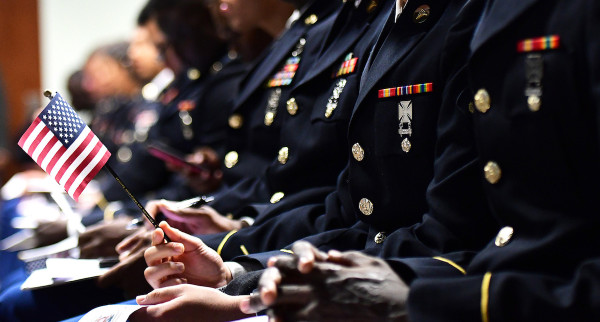

The United States has spent upwards of $6.4 trillion on the post-9/11 wars, from outright appropriations funding to health care costs for veterans of the conflicts in Iraq and Afghanistan. But as the Global War on Terror enters its 19th year, new research underscores how different states are bearing the human costs of the forever wars.
According to data analyzed by researchers for the Costs of War project at Brown University, California, Texas, Florida, New York, and Georgia all contributed the most raw numbers of U.S. service members to America’s wars in 2019.
That’s not totally surprising, since those states all boast large populations in general. But the Cost of War data also shows that South Carolina, Hawaii, Alaska, Florida, and Georgia sent the highest numbers of troops per capita, or relative to their overall populations.

Why are these five states among the top contributors to the U.S. armed forces?
There are multiple factors, according to the research: states with a higher number of bases and contractors generally tend to have a higher number of military enlistments, for one.
But lead researcher Stephanie Savell believes there is a rough correlation between the country’s poorest states and its highest contributors on a per capita basis — a trend likely facilitated by the DoD’s propensity to recruit from economically-disadvantaged populations.
“The DoD’s recruiting strategy is focused heavily on poor neighborhoods, and people are often motivated to join the military to secure a decent income,” Savell told Task & Purpose. “There are so many kinds of ways that the inequalities in the country in terms of class and race line up with the military’s most concentrated recruiting efforts.”
Geographic trends aren’t just shaped by the DoD’s recruiting strategy but consolidated by “a strong tendency towards intergenerational military service.,” according to the research. Roughly 80 percent of new recruits have at least one direct relative who also served, according to Pentagon data cited in the research, while more than 25 percent have a parent who’s a service member or veteran.
“Those who understand military life are more likely to consider it as a career option than those who do not,” as Army Recruiting Command spokeswoman Kelli Bland told the New York Times in January.
Interesting, the top contributing states have changed drastically since the start of America’s post-9/11 wars. Savell says Alaska and Hawaii were “nowhere near” among the highest contributors on a per capita basis back in 2001, and according to data provided to Task & Purpose, states like Montana and Wyoming were among the top per capita contributors in 1997 and 2001 before Global War on Terror truly took off.
But the real consequence of the research isn’t necessarily what it says about troop contributions, but what it implies about casualties. According to the research, the reader “can assume that certain states are more touched than others by war casualties,” so far that the per capita contributions trace the boundaries of the so-called “casualty gap” wherein a handful of communities shoulder the bulk of the human cost of America’s wars abroad.
“Part of this is that there’s that strong trend towards intergenerational military service, which is how these patterns are entrenched over time,” Savell said. “But at this point, certain communities have higher rates of casualties simply because they have higher rates of enlistment.”
According to Savell, the casualty gap isn’t just about military service, but civic engagement more broadly: Her research indicates the more Americans who learn about the casualty gap, the less support they broadly show towards U.S. military efforts abroad. Put simply, the inequalities in American warfighting are a persuasive argument against the enterprise of American war.
“This just goes to show that Americans have a strong, egalitarian ideal of military service, and ideal that people would be serving across glass and geographic lines,” Savell said. “But when people find out that this isn’t happening, they feel it’;s unjust and don’t support war as much.”
“What’s missing from this conversation is burden sharing,” she added. “The states with the highest per capita burdens are bearing the brunt of war and there are all kinds of ways that this has repercussions on how they engage as citizens.”
